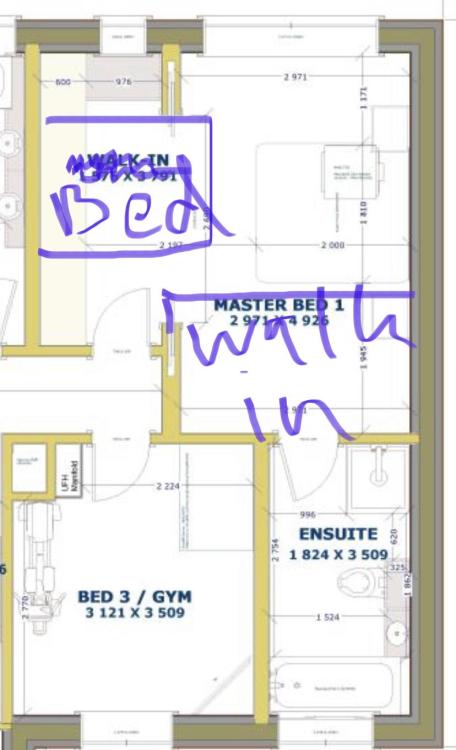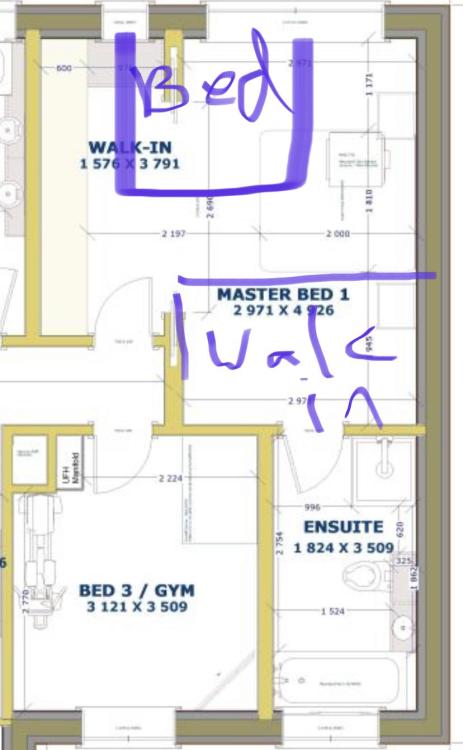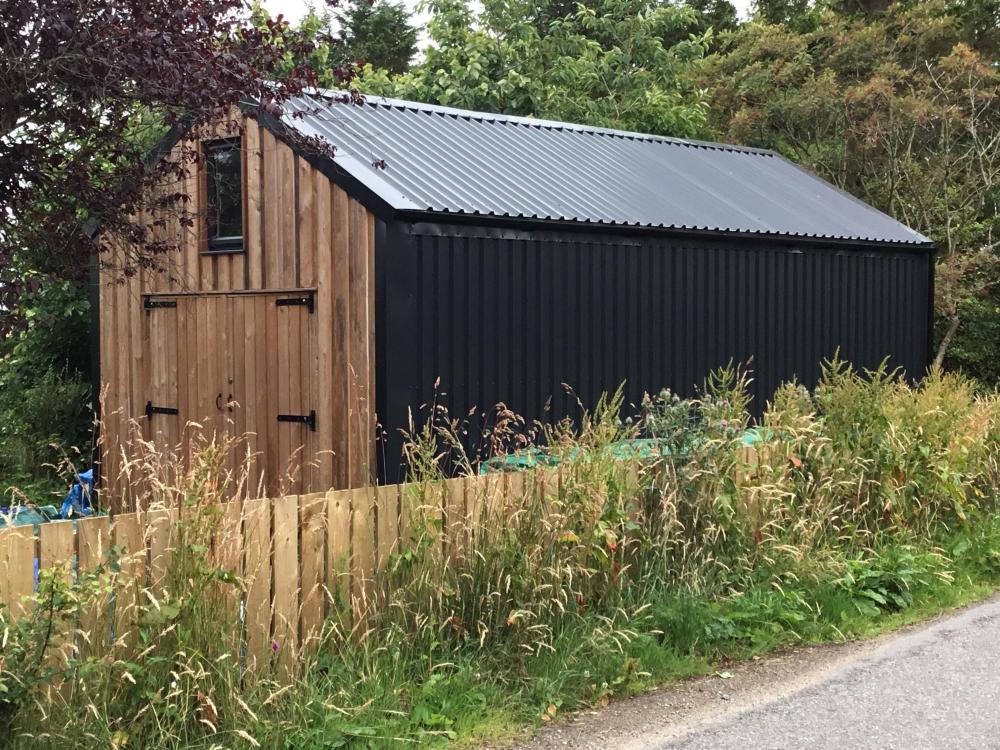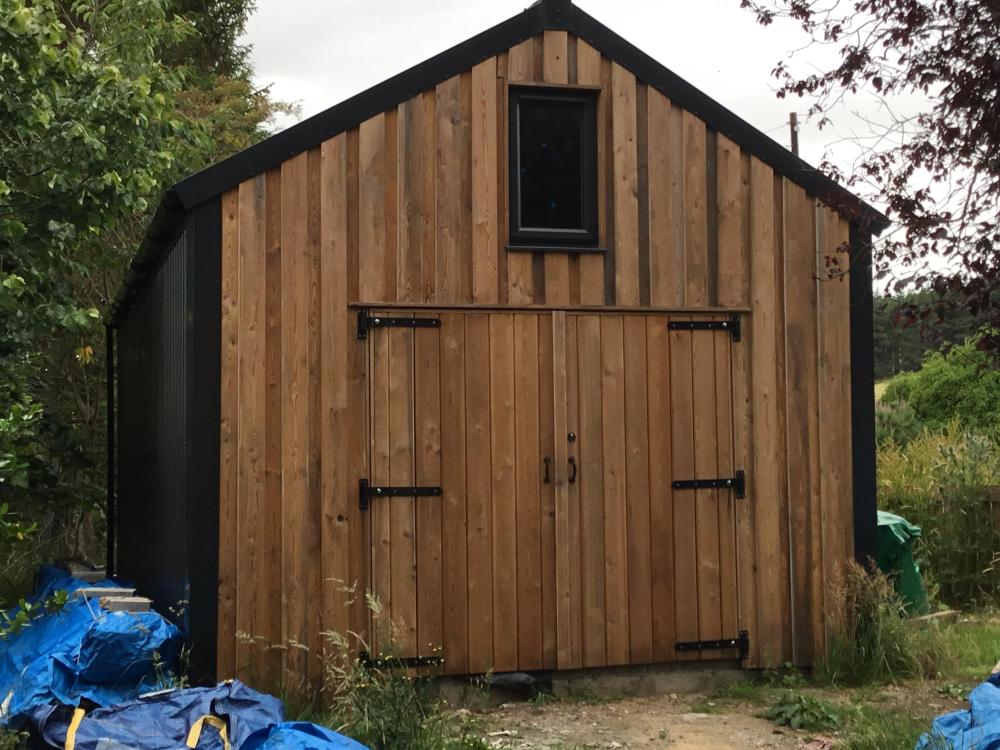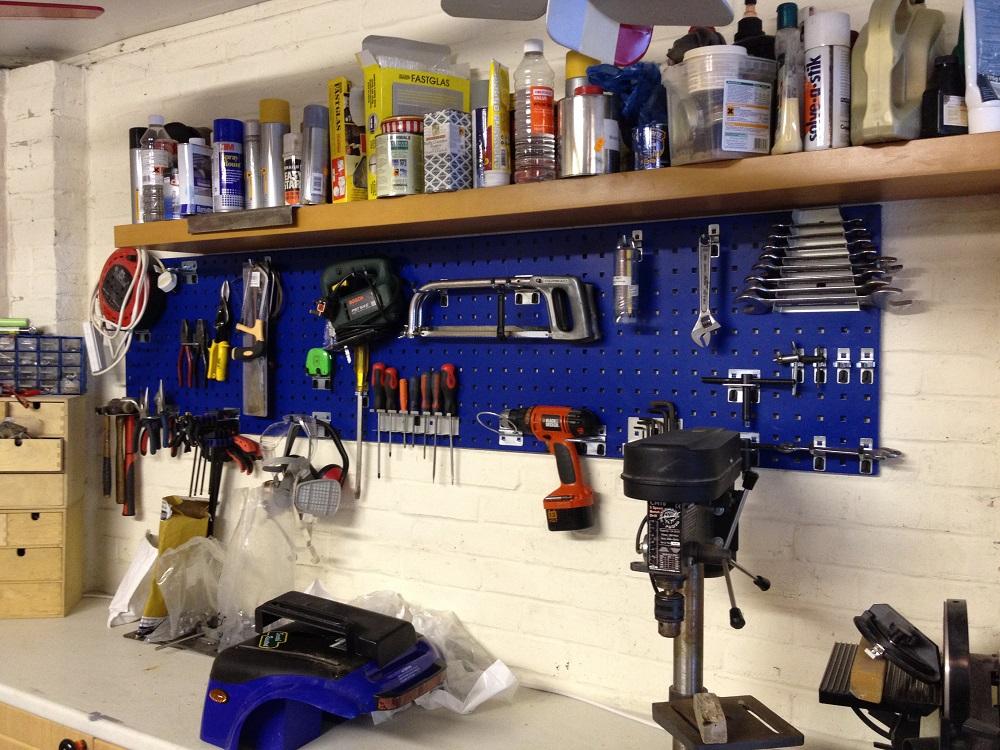Leaderboard
Popular Content
Showing content with the highest reputation on 10/04/22 in all areas
-
Its for lazy sods like me who cant be bothered to get out of their armchair to turn on the light when it gets too dark to read the paper 🙂 LOL. But to the question: It's been said many times already in this thread but I'll repeat it once more: if you're getting your phone out to control stuff, you're completely failing at home automation. The point of automation is it automatically does stuff without manual intervention. For example in my house: - windows automatically open when it's hot or the house is in risk of overheating, and it's cool outside and the indoor lights are off (to avoid attracting bugs in), so long as it's not raining or forecast to rain imminently. - the blinds automatically close on the sunny side of the house if there's a risk of overheating. And they close at night. But if closed in the day in winter, the slats are automatically altered to maximize solar gain while preserving privacy. - the heating and hot water is automatically turned down a notch when the house is unoccupied, and the mains water stopcock turned off to avoid risk of damage should there be a leak. - the hotwater cylinder is automatically boosted to a higher temperature (more stored energy) the more guests we have staying over. - the patio lights automatically turn on when the nearby door is opened. - hallway and bathroom night lights automatically turn on as you move about at night. - the relevant towel radiators automatically warm up whenever a shower or bath is used. - the ensuite electric UFH automatically comes on and the bedroom lights slowly fade up 5mins before my wake-up alarm goes off. And 10mins after the alarm the curtains automatically open. - excess PV generation is automatically sent to immersion, towel rads, ASHP etc depending on needs Etc. Etc. Etc. Those were off the top of my head, I think it's not even halve of what I've programmed The important bit about all that is it's all easily defined in a single software stack, so I can change preferences on it with rewiring or fiddling with mechanical timers or anything. And none of this requires arsing about on a phone. And it works without any internet connection (well except forward looking weather forecast data). I really don't want to persuade a single person they need any of that unless they already know they want it. But at least try and understand the utility of it for those that do chose to persue it. This has absolutely nothing to do with "what new problem can I dream up to solve if I buy a raspberry pi" and everything to do with "how do I want my home to assist and facilitate the preferences of the occupants living in it".4 points
-
I've made a few of these. The ones for taking heavy stuff are made out of 2 bits of oak faced MDF 18mm thick glued together to give a thickness of 36mm. I glued a solid oak edge trim on and it looks passable. The main thing is the the fixings. Here I resin anchored two M12 rods into the masonry behind and tilted them upwards a fraction. Rods project about then offered up the shelves and gave them a "dunt" so the rods marked the back of the shelf. Then drilled them out to the rod depth and slide them over the rods. I also made another lot (out of a recycled bit of oak furniture) that go onto a TF stud wall, they don't project so far though, ~ 275mm. Again I experimented and drilled the studs and used resin. A year later disaster has not struck.. I will obviously come clean if it does later on.. promise. Have attached photo of the lighter loaded shelves.. will try and take photos of the MDF shelves once I have tidied them up.2 points
-
Hiya @joe90, no I’ve not got a project on , I stumbled across the forum on Sunday and decided to join and possibly share some of my knowledge along the way.2 points
-
If you want to know how to go from MDPE to hep2o ask @pocster 😉!! Im doing the same as you at the moment, but in a renovation not new build. Kitchen sink is plumbed in with no leaks, bathroom is next!!2 points
-
I am not a plumber bit did all my own on the last 2 houses, what little I know my dad (who was a plumber) taught me. I don't think he was happy that I chose electrics over plumbing. What are you planning to use for water? I am old school and like soldered copper. But plenty here will advise on various push fit systems and what are good and not so. Drains can be challenging, they all have to run down hill, and in certain parts of the country certainly here) building control WILL want to witness a pressure test, so no room for leaks or bodges. My motto was test as you go and keep testing, you don't want to find out you have a problem after the plasterboard is all on.2 points
-
Have you got planning approved yet, I would start with that, find out how big you can go, then start looking at how. Then how much will you do yourself. And how much money do you have now. A timberframe is a lot of up front cost straight to the manufacturers, so if you are self funding you will need a big chunk straight away to start the ball rolling. Brick n block you can feed in money more steadily as the brickies need it.2 points
-
welcome. you've certainly come to the right place to get information on all of that! you sound like you're in a very similar place to where we were 3 years ago. we decided on timber frame and, if I was to do it again, I would go for a twin-wall passive timber frame with pumped in cellulose for insulation. will give the solid feeling wall you want and also be a lot more environmentally friendly than block and brick. but there are also many on here that have built block and brick and have very good airtightness and low heating. there are so many different factors involved in both build methods. my advice is to spend hours and hours and hours reading this forum as all the information you could think of is here. go through each sub-forum for the subject you're interested in or do a search. maybe your first search should be 'timber frame vs brick and block' as that subject has been discussed many time. good luck and I look forward to following your journey.2 points
-
I see there are also active versions that at least regulate down from 48V to 12V at the far end. That might be a better approach as it would considerably reduce the current in the feeder cable. I was expecting to buy a regular PoE equipped switch for the router end of this link anyway.2 points
-
Hi. We're just about to start on a Barn Conversion in Cornwall of previously agricultural stone barns. It's taken a long time to get to this point with planning, building regs, mortgages etc but the ground workers have just started and now very conscious of all the decisions that need to be made. The forum has been really helpful so far with finance and other matters so I think it's going to be really valuable to read experiences from others. Thanks in advance!1 point
-
Evening lads, new to the forum. im mark from Wolverhampton been plastering and rendering for 24 years1 point
-
Where to start!!!! I have an 1/2 acre serviced plot with a bungalow to be demolished. Found an Architect that I seem happy with, however..... I'm so confused and we are not really off the starting blocks yet. We were adamant we wanted a traditional block/brick house. 4 bedroom about 220/240sqm with a useable but not habitable loft, Mid spec, budget approx 500k. Following a recent house builders exhibition, we are now thinking is a wood framed house (like Potton), oak framed or SIP better. Previously having a new build I hated the paper thin walls hence why we like our current old brick built house but for what I'm led to believe self builds are not like this and the alternatives may be a better way to go? Advice please. What are people's opinions? We seem to take one step forward and ten back.. SIP look to be future proof but then I worry about reading of a 65year timescale on these and this house I potentially want to live in for the next 30 years and pass to my children being no good further down the line. Oak framed look lovely but seen to incorporate an awful lot of glass to most of them which we do not want and are we paying the extra just for the 'oak effect'. Potton and the likes of do not fill me with confidence and reviews do not seem that great. Brick/block.... Is it not worthwhile anymore, we were looking at solar panels with battery, underfloor heating, air pump etc but would this lose too much heat. Since originally thinking of this project pre Covid prices have also considerably increased and is this size property doable still on our budget? Help a girl out please1 point
-
There's something a bit odd about plumbing that always makes me put off doing any for as long as possible - until I finally cave in and dig out the plumbing toolbox. Once started, I don't want to stop. Funny that. I think it's a confidence thing, more so than with other DIY tasks.1 point
-
Welcome from me. You'll find all sorts here from folk just starting out to some real experts in their fields. I'm into SE type stuff but always learn loads on BH so anything you can chip in is appreciated. Great friendly site, a good few great characters too!1 point
-
Have posted on here a couple of times in past but never introduced myself(that I can recall) so here goes. Name's Tom, have a Mrs and 3 teens. Have recently received planning for house below. Will be going direct labour while doing certain elements of the work myself. House will be block built with 250mm cavity, wet dash walls, 3g windows, mhrv, uf heating off willis, pv panels facing southeast and southwest. Will have loads of questions over the duration, some will be silly but I know you are a patient lot. Located in Ireland BTW.1 point
-
A mate of mine got a robot vacuum and a puppy about the same time. It was like a dirty protest 🤮1 point
-
Worth a read https://www.gardeningknowhow.com/lawn-care/lgen/using-sand-on-lawns.htm1 point
-
Sent mine on 1st May and got the same text on 4th August so guess they sent a text to everyone on the 4th!1 point
-
Like most of the build I enjoyed doing it With no time constraints It’s worth spending a bit of time The one big mistake I made was I didn’t buy the lye flat pipe The other stuff was like wrestling with an alligator in sub zero temperatures1 point
-
1 point
-
Checked HMRC’s own DIY forum latest poster has been waiting 7 months since he sent his claim to them……..1 point
-
1 point
-
what have I let myself in for!? 😂 but surely on a new build it's not horrible, nasty or wet as everything is dry, new and non-smelly?1 point
-
I asked this question when we fitted our first tank The tank lady told me that buying in bacteria is ridiculous She said leave a poo in there for a week and there will be millions of the little buggers1 point
-
1 point
-
My rigid plastic duct is glued together using the same glue as the plastic waste pipe.1 point
-
A full oak frame looks great could be quite expensive. It can also be problematic sealing the infill panels as they have to cope with shrinkage and movement of the oak. All possible but do your research into the issues. It's possible to build a brick and block house with lots of internal oak details that aren't structural. I recommend making a scrap book with photos of houses and house details that you like and use that to help brief your Architect. Your Architect will need to try and find a compromise between what you like, what you can afford and what the planners will allow on your site. Its worth thinking about your attitude to risk. For example how critical is it to remain within the budget? Is it an absolute hard limit or a softer target? Make sure your Architect understands this. Its too easy for them to get carried away and design something you cant afford to build. Architects, Quantity Surveyors, Structural Engineers fees can add quite a lot to the bill. Typically they like to charge a % of the build cost. I would avoid this if possible. Negotiate a flat fee. Otherwise it means they have less incentive to reduce costs. If you get to the end of your build and decide to splurge on an expensive kitchen the Architect might be in for say 10% of the extra cost. Think carefully if you really need the Architect to be involved at all stages of the project or just for the design phase? Perhaps just until you have Building Control Approval? Depends how comfortable you are managing Builders and projects in general.1 point
-
We built a timber framed highly insulated house about 10 years ago, all I can advise is try and see as many building of different construction types as you can, we went round several new builds in the area and spoke to the developers about what they were doing and we also approached some self builders, most were very happy to help, at that time in Norfolk there was an excellent open house scheme for people interested in design and energy efficiency where self builders and related business has open days.1 point
-
If the hardcore will bridge a DPM then it’s a no no or you will get damp walls. You could leave a gap between wall and patio. if the weep holes are in a retaining wall (damp rising is not a problem) you could use a clean crusher run (concrete,brick,stone pieces) not Type1 which will allow the weep holes to drain. This will create a sort of French drain, type 1 could be used under rest of patio.1 point
-
Welcome. A house can look the same, or different, irrespective of construction type. So don't get hung up of that aspect. Energy usage is down to two main things, insulation levels and air tightness. OK 4 things if you take the size and form into account. One advantage of factory build timber frame houses is that they tend to be higher quality as they are made using jigs and better tooling. The best an onside builder has is a wonky straightedge and his grandfathers spirit level. Don't get hung up on kitchens and bathrooms, they are simple things to change, some on here have paid more for them that my house costs. Also don't get to involved in heating systems, design a house to be low energy usage and it really does not matter what sort of system you put in, it will use little energy. What part of Essex, there are the nice bits, and then there is the Thames Estuary, which I still have a soft spot for.1 point
-
Timber frame does not mean "paper thin walls" The walls can be as thick and solid as you want them to be. Arguably properly made timber frame with the right insulation transmits sound less than a brick wall. If you want the traditional look, timber frame with a brick outer skin is common.1 point
-
Hey gang, My names Pete, I’m an avid diy-er who loves to learn new skills and turn my hand to as much as possible. My latest research topic is prefab/self-build cabins for my first home! I’m slowly losing my sight due to a genetic disease so getting somewhere to live is up there for me on my list of things to do. I also love hearing about people who still DIY with vision issues and tech to help diyers with disabilities. thanks for having me!1 point
-
You could use a 'poor mans' passive PoE injector/splitter such as this one and then you'd have the choice of any switch you like.1 point
-
1 point
-
1 point
-
Almost certainly, yes. Could be leaking 1kWh/day at certain times of the year. If they made it an adjustable parameter, you could tune it to your utility meter although that would involve seeing some indication that it is indeed exporting. My meter has an icon of a ratchet and pawl on the LCD that shows "meter running backwards" harking back to the days of mechanical metering. It also has an export register so incrementally adjusting the threshold over a longish period would allow you to slowly 'turn the tap off' until it stopped 'leaking' but this would be difficult if the diverter maxes out occasionally.1 point
-
Sent ours on 15th June this year. Had a text on 4th August to say "We've received your DIY claim, due to limited resources it may take us longer than usual to process your claim. Please don't contact us, we'll update you when your claim has been reviewed". Nothing since then.1 point
-
Had to heat my place up to 23C continuously for months to get it to dry out and then the RH dropped from the 70s to the 50s. I think keeping it warm is a little more important than ventilating it.1 point
-
Check out the tool loan forum: Unfortunately, two of the three units have gone missing in action, so we're about to implement a deposit system. Post over in the thread above and I'll add you to the list for the tool.1 point
-
+1 I've had to drill through soft-ish brick slips, which probably have similar challenges to the tiles you'll be drilling. Ordinary masonry bits are far too blunt to make any sort of dent without a decent hammer action drill, but the hammer action risks cracking the tiles. Spear point bit and patience are your friends.1 point
-
Is that why the instructions for my Solar iBoost says "Solar iBoost+ has a default cut in threshold of 100W of export before diversion commences." I wondered why.1 point
-
Search reverse PoE.. Not unmanaged but nice kit all the same for change of £30 https://www.broadbandbuyer.com/products/41685-tp-link-tl-rp108ge/1 point
-
@JamesP Not a word. I sent mine by UPS, and it was delivered on 15-Aug-22. I may ring them up next week.1 point
-
I have an idea, but I think it would only work if you can move your windows. Hear me out: In my experience using the bathroom is noisier than the wardrobe, particularly if you can pick out tomorrow’s outfit when your partner is still awake. So I would place the walk in wardrobe in between the bathroom and the bedroom, to give the bathroom some extra noise insulation. I’m not sure you need a sliding pocket door for the walk in wardrobe. Just make it one communal walk in area with one regular (but fairly narrow) door. The two options I can think of to achieve this are. Option 1 Problem with Option 1 is that the location of the bed is really sub optimal. Walking into a bedroom and hitting the bed like that is just awkward. And it’s a bad use of space as the top right hand corner is wasted and the bed area is cramped. So Option 2 fixes these issues, but you would need to move the windows:1 point
-
I signed up to HMRC’s DIY Forum. This is the section who deal with our VAT claims. Some of the postings regarding the timescale for payments are pretty shocking. HMRC admit to being months behind in dealing with DIY claimants. Latest post, chap describes how he was so frustrated he went to his MP who then contacted the appropriate dept. Payment was duly paid out within days. Quite impressed to hear of an MP doing something worthwhile! However, that doesn’t help the rest of us stuck in what seems to be a very long queue.1 point
-
A figure of 72% internal humidity explains everything. https://www.oxford.gov.uk/info/20271/guidance_for_private_tenants/1129/preventing_damp_and_mould#:~:text=A good range of indoor,minimise or control dust mites.1 point
-
Forgot i'd done this for some reason 😂 Been a long time coming, but finally decided to get on with it, heres a few before and after and during pics, I did use wall anchors too but for some reason didn't bother taking a photo at that point. Pleased with how it came out, not only looks better than before with the conduit for the wire which is now buried, but should also save some £££. The plinth insulation will get rendered at some point in the future in black, but the tubs are of a size where i kind of need to be able to do all my sections at once.1 point
-
I built (not yet finished) this thing. It’s timber framed and clad in steel and leftover larch. Has a concrete floor. Due to budget restrictions I hand built it myself, and I’m not a tradesman but ok with joinery & diy. It’s 8m x 4m x 3.9m high. I had pp for garage so got the vat back on materials. Inside the rear half has a loft space - storage and the front half is a vaulted ceiling, for a workshop area. Never built a building before, so I followed building standards for a dwellinghouse and tried to copy what my proper builders did in our actual house. Idea being if I built it like a house it would take me way beyond min standards for an outbuilding. So it has DPCs, breathable membranes etc etc. it’s even plaster-boarded inside. I bought heaps of 4x2 in a builders material auction and built modular 2.4x 2.4m osb clad frame panels for the walls. Shopped around for everything to cut costs. My budget was as cheap as I could do it to the best possible standard. I didn’t keep a running total but think I’ve spent around £5-6k on it that being current lockdown/covid costs. I think I’ve ended up with a circa £15-20k building. It was hard work but good fun learning new skills etc eg building the roof. I did consider buying a metal frame to be installed but by the time I factored in everything it was obviously more expensive. We were hit hard by Storm Erwin etc but the building was unaffected. Which was reassuring. Hope this helps for ideas.1 point
-
1 point
-
I'm not sure if there are suitable alternative of hooks to use with the Bott system other than their own brand. You can buy a mix pack of hangers and you can arrange them as necessary to hold things. I would expect to spend the same on hooks as I would the wall panel. For holding items such as cordless drills its best to combine 2 different hanging parts to make a "holster" suitable for it. Items such as hammers, screwdrivers, spanners, etc, all have their own dedicated hook. Here's the ones I hung in my dads garage for him. Panel 1 of 2 (circa 2011) Again, there's plenty of inspiration on google.1 point






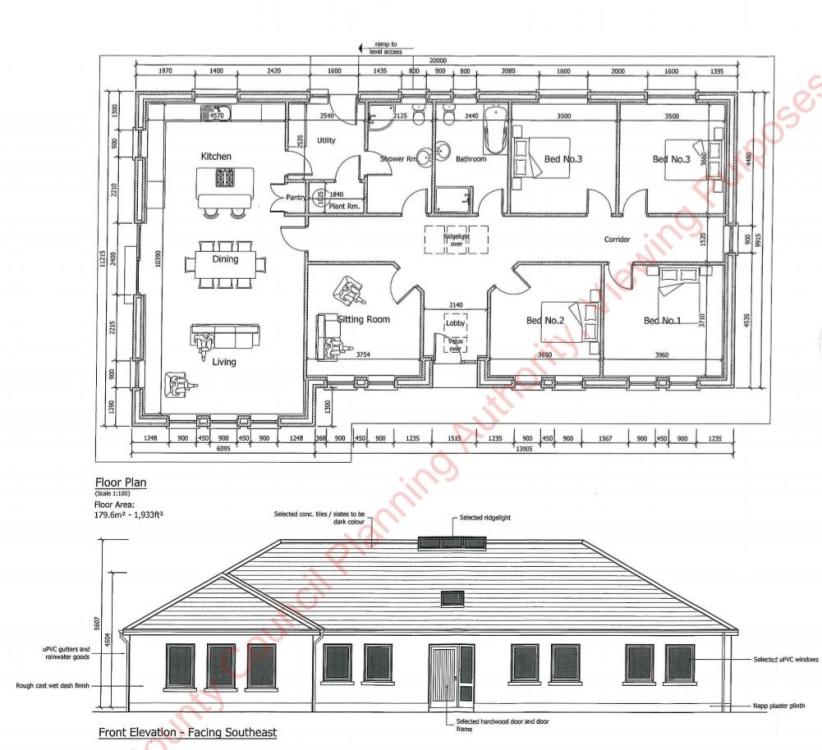



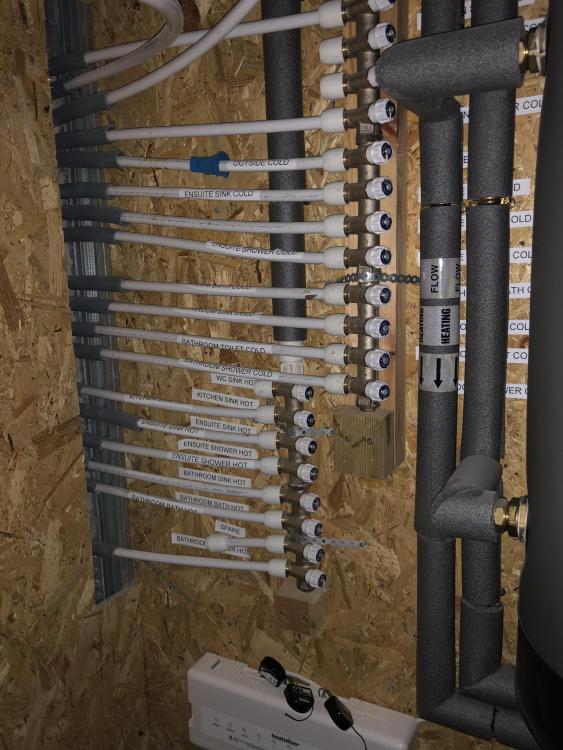




.jpg.c21f3ac78c9b7efd90cbdcb312744dc5.thumb.jpg.7adcad4c0e384f5ecd7d56b0618df6e5.jpg)



